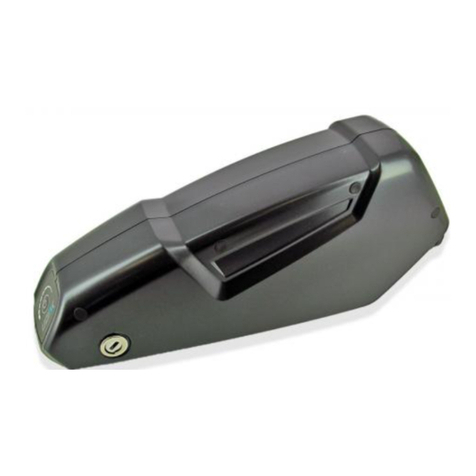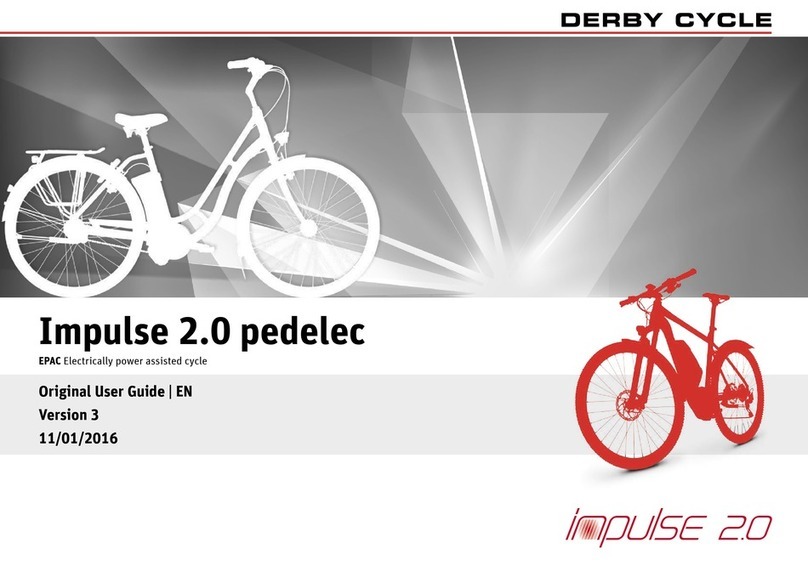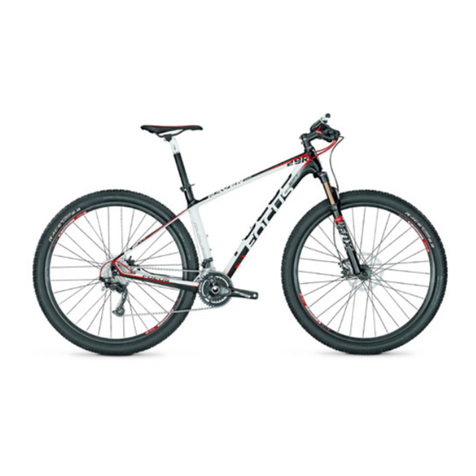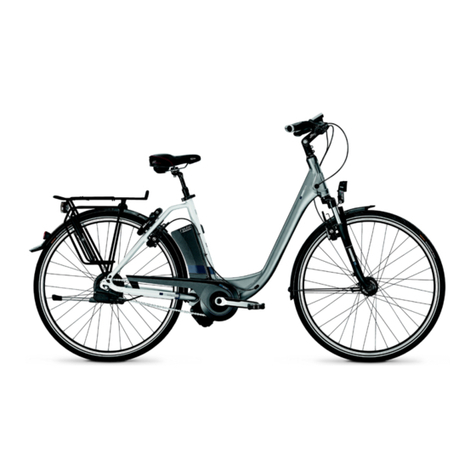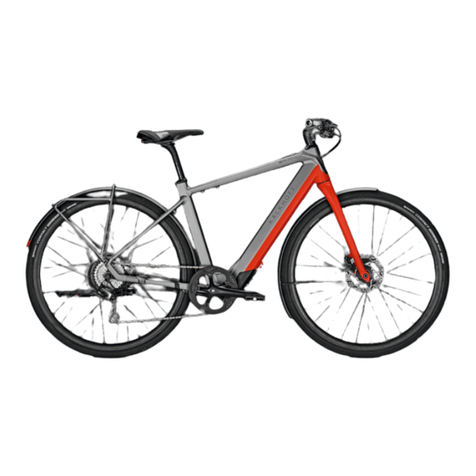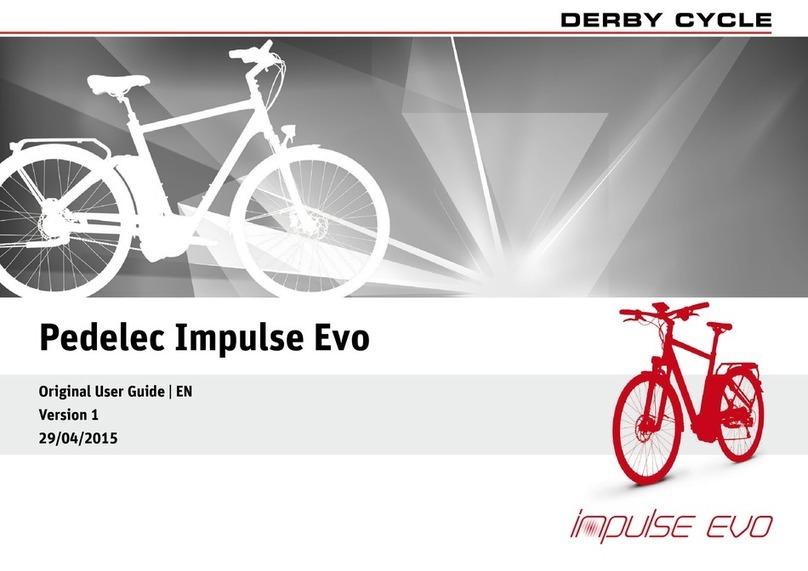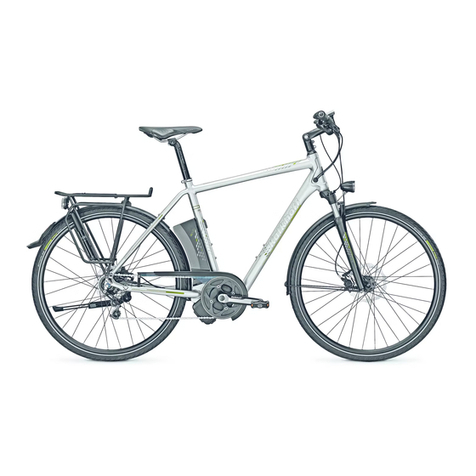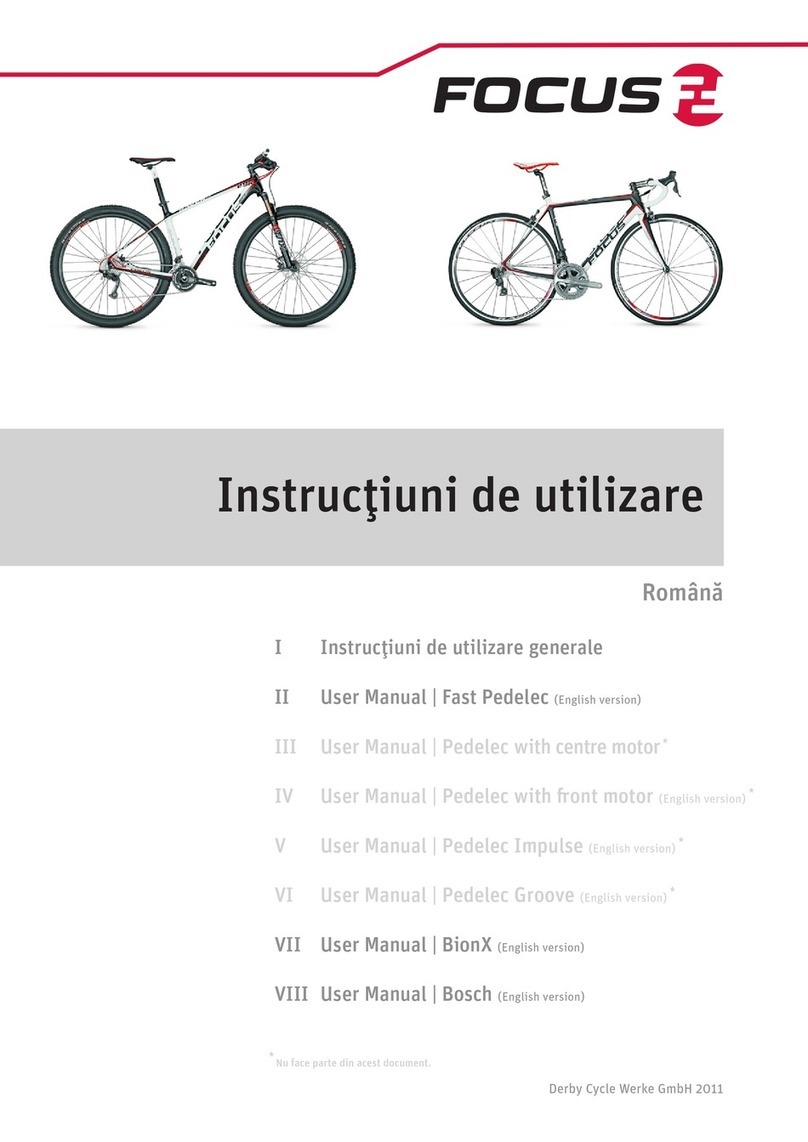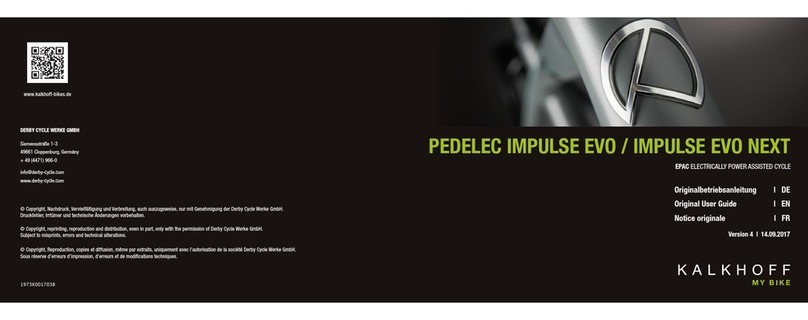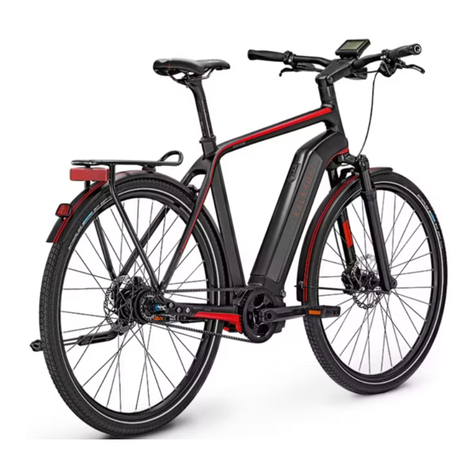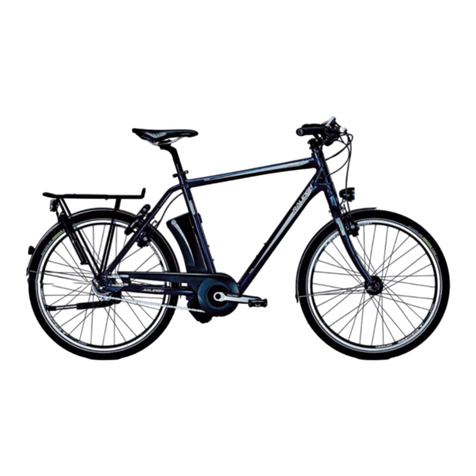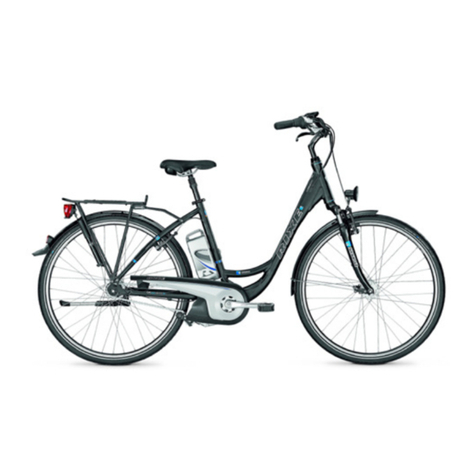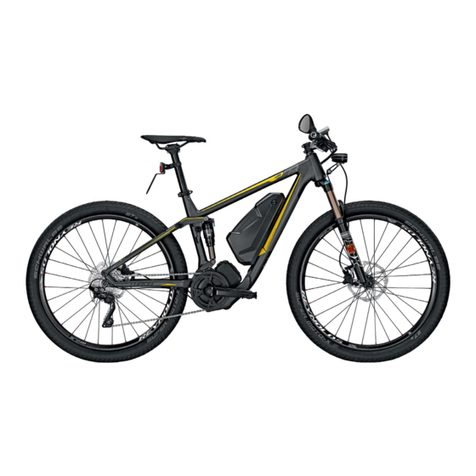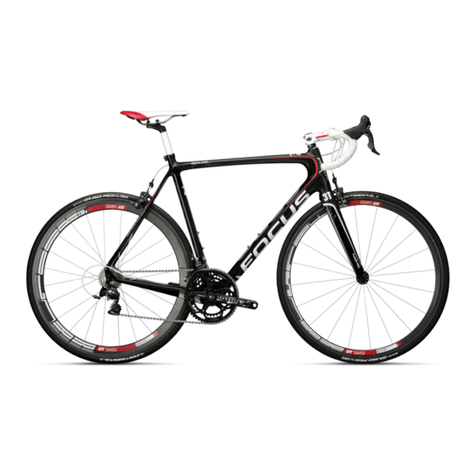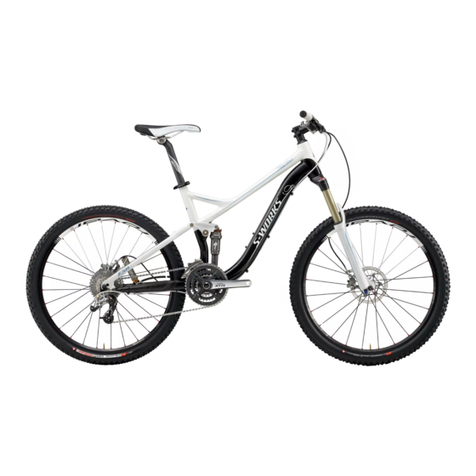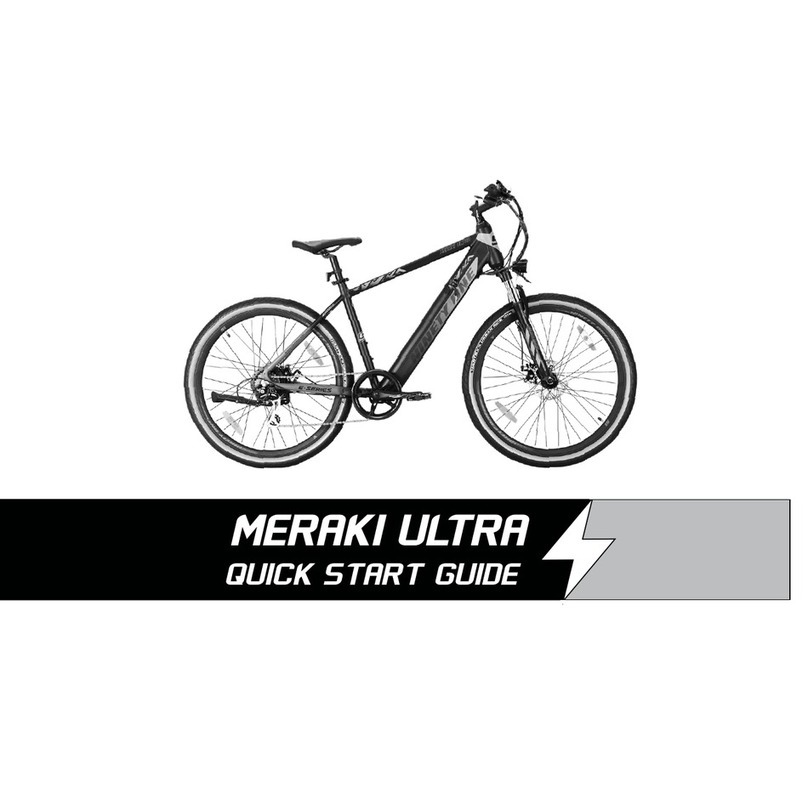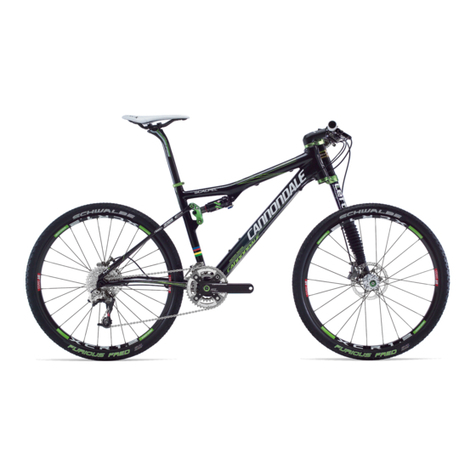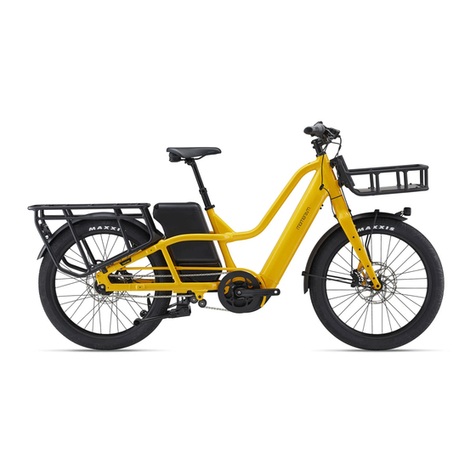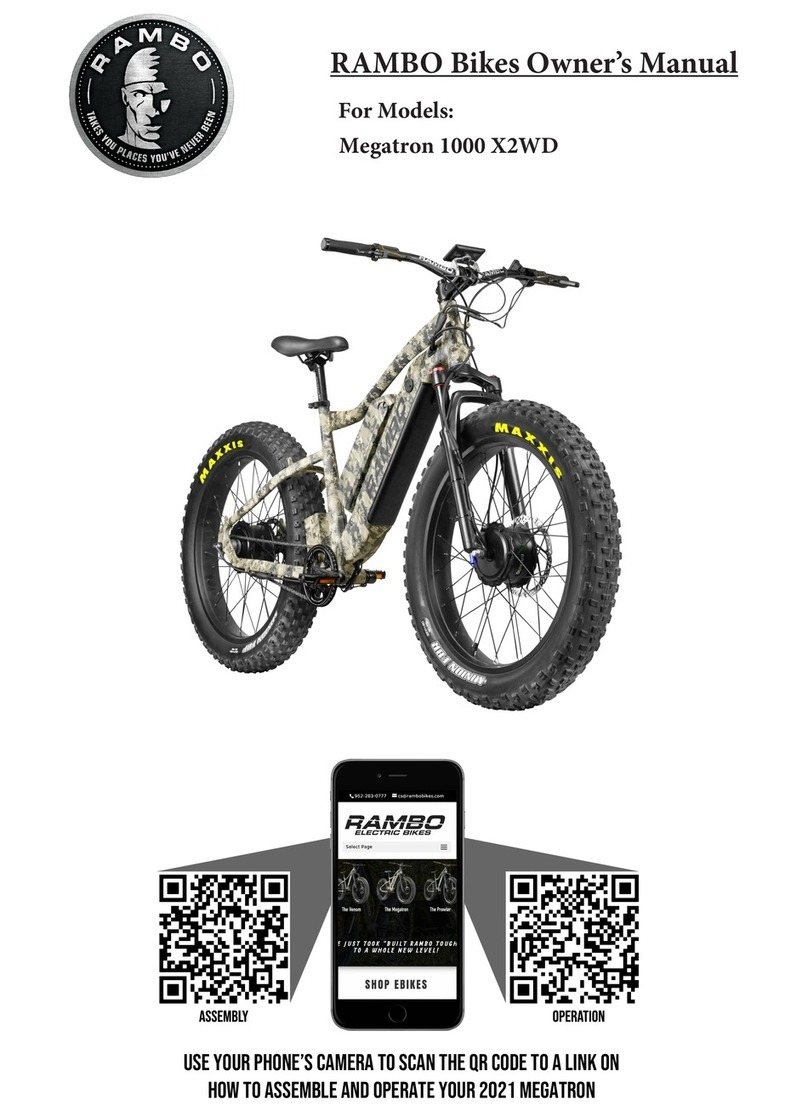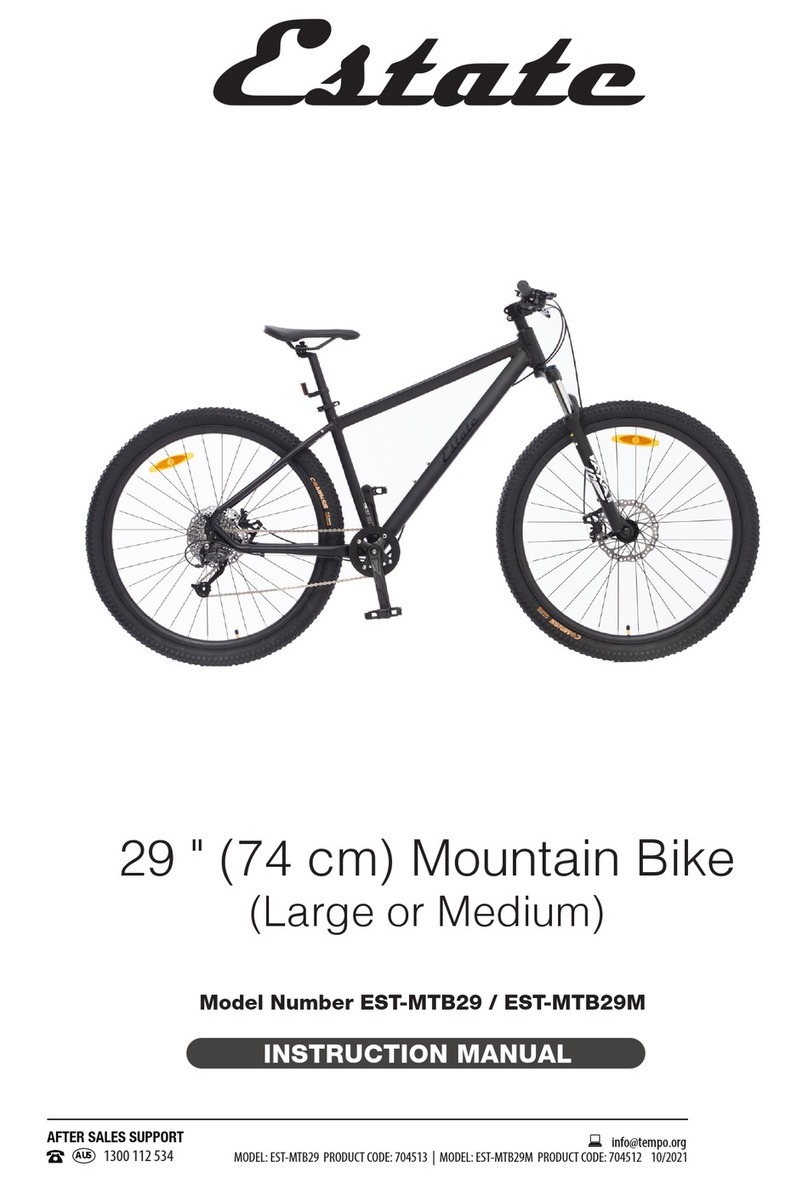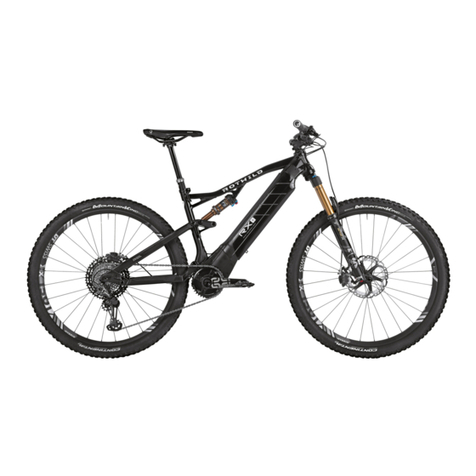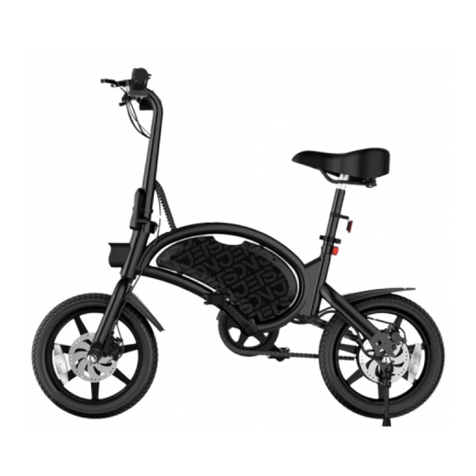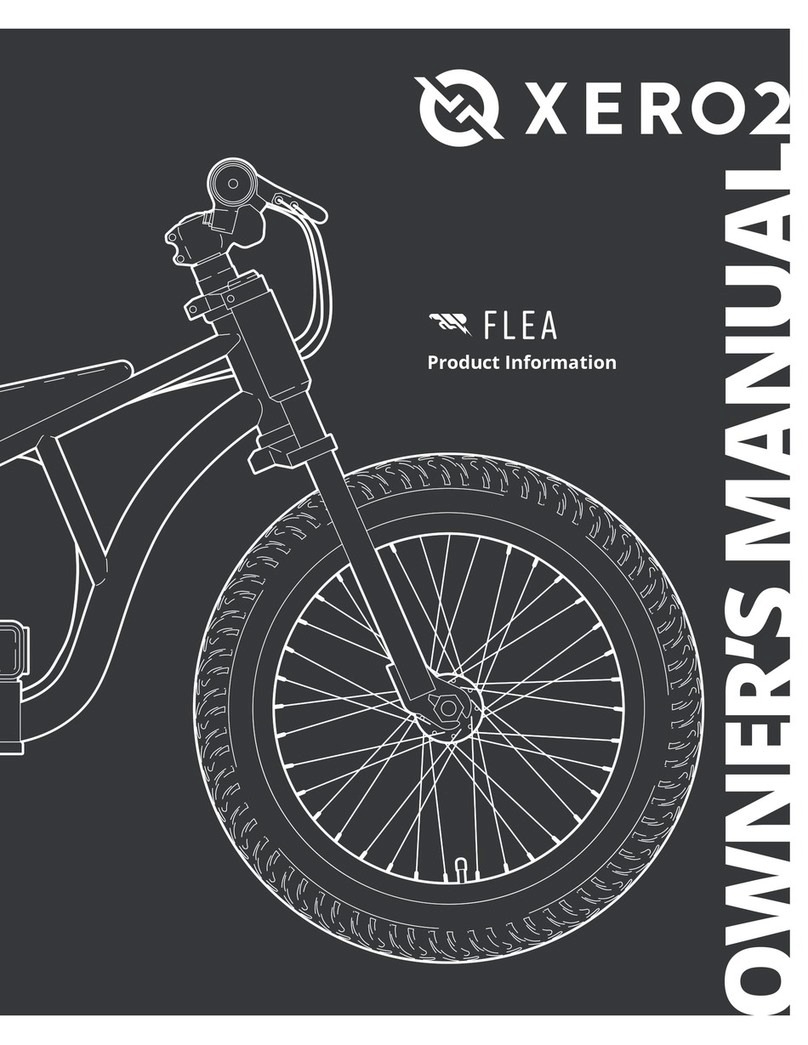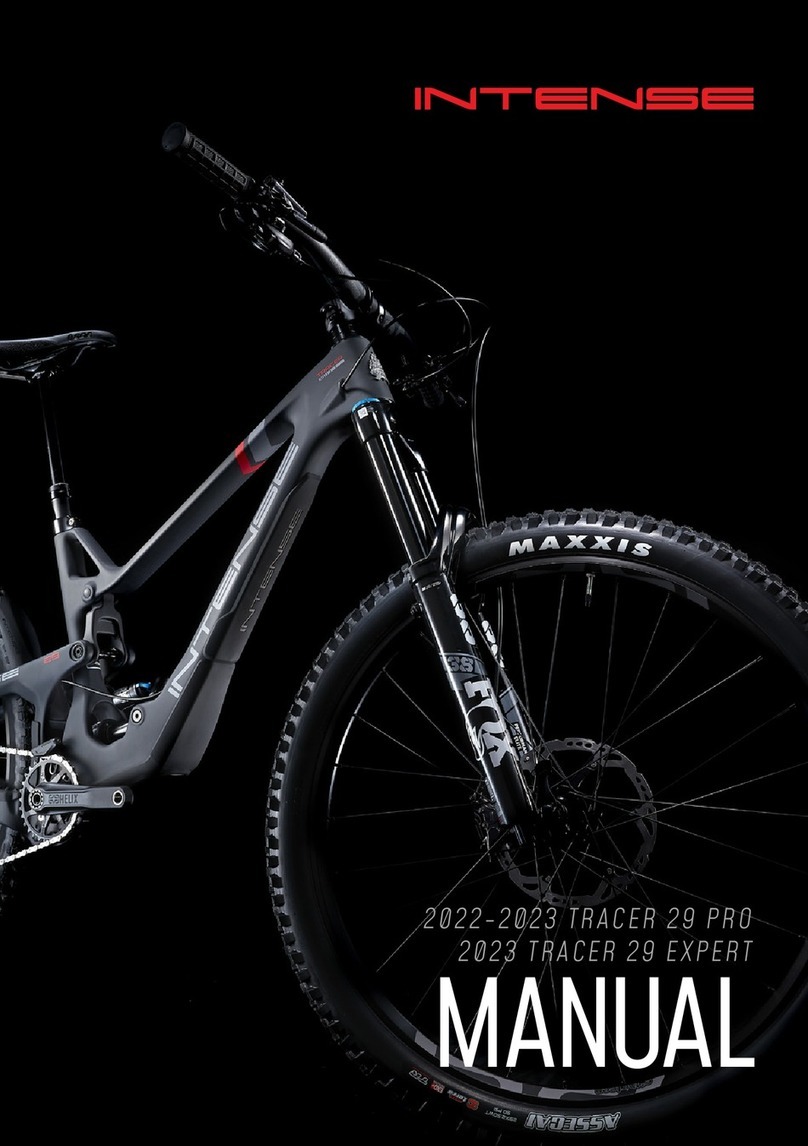10 Bicycle Owner’s Manual
If you choose to ride under conditions of poor visibility,
check and be sure you comply with all local laws about
night riding, and take the following strongly recommended
additional precautions:
• Purchase and install battery or generator powered
head and tail lights which meet all regulatory
requirements for where you live and provide adequate
visibility.
• Wear light colored, reective clothing and accessories,
such as a reective vest, reective arm and leg bands,
reective stripes on your helmet, ashing lights attached
to your body and/or your bicycle ... any reective device
or light source that moves will help you get the attention
of approaching motorists, pedestrians and other trac.
• Make sure your clothing or anything you may be
carrying on the bicycle does not obstruct a reector or
light.
• Make sure that your bicycle is equipped with correctly
positioned and securely mounted reectors.
While riding at dawn, at dusk or at night:
• Ride slowly.
• Avoid dark areas and areas of heavy or fast-moving
trac.
• Avoid road hazards.
• If possible, ride on familiar routes.
If riding in trac:
• Be predictable. Ride so that drivers can see you and
predict your movements.
• Be alert. Ride defensively and expect the unexpected.
• If you plan to ride in trac oen, ask your dealer
about trac safety classes or a good book on bicycle
trac safety.
F. Extreme, stunt or competition riding
Whether you call it Aggro, Hucking, Freeride, North
Shore, Downhill, Jumping, Stunt Riding, Racing or
something else: if you engage in this sort of extreme,
aggressive riding you will get hurt, and you voluntarily
assume a greatly increased risk of injury or death.
Not all bicycles are designed for these types of riding,
and those that are may not be suitable for all types of
aggressive riding. Check with your dealer or the bicycle’s
manufacturer about the suitability of your bicycle before
engaging in extreme riding.
When riding fast down hill, you can reach speeds
achieved by motorcycles, and therefore face similar
hazards and risks. Have your bicycle and equipment
carelly inspected by a qualied mechanic and be sure
it is in perfect condition. Consult with expert riders,
area site personnel and race ocials on conditions and
equipment advisable at the site where you plan to ride.
Wear appropriate safety gear, including an approved ll
face helmet, ll nger gloves, and body armor. Ultimately,
it is your responsibility to have proper equipment and to
be familiar with course conditions.
WARNING: Although many catalogs, advertisements
and articles about bicycling depict riders engaged
in extreme riding, this activity is extremely
dangerous, increases your risk of injury or death, and
increases the severity of any injury. Remember that the
action depicted is being performed by professionals with
many years of training and experience. Know your limits
and always wear a helmet and other appropriate safety
gear. Even with state-of-the-art protective safety gear, you
could be seriously injured or killed when jumping, stunt
riding, riding downhill at speed or in competition.
WARNING: Bicycles and bicycle parts have
limitations with regard to strength and integrity,
and this type of riding can exceed those limitations
or dramatically reduce the length of their safe use.
We recommend against this type of riding because of
the increased risks; but if you choose to take the risk, at
least:
• Take lessons om a competent instructor rst
• Start with easy learning exercises and slowly develop
your skills before trying more dicult or dangerous riding
• Use only designated areas for stunts, jumping, racing
or fast downhill riding
• Wear a ll face helmet, safety pads and other safety
gear
• Understand and recognize that the stresses imposed
on your bike by this kind of activity may break or damage
parts of the bicycle and void the warranty
• Take your bicycle to your dealer if anything breaks
or bends. Do not ride your bicycle when any part is
damaged.
If you ride downhill at speed, do stunt riding or ride in
competition, know the limits of your skill and experience.
Ultimately, avoiding injury is your responsibility.
G. Changing Components or Adding Accessories
There are many components and accessories available
to enhance the comfort, performance and appearance of
your bicycle. However, if you change components or add
accessories, you do so at your own risk. The bicycle’s
manufacturer may not have tested that component or
accessory for compatibility, reliability or safety on your
bicycle. Before installing any component or accessory,
including but not limited to a dierent size tire, a lighting
system, a luggage rack, a child seat, a trailer, etc., make
sure that it is compatible with your bicycle by checking
with your dealer. Be sure to read, understand and follow
the instructions that accompany the products you
purchase for your bicycle. See also Appendix A, p. 24 and
B, p. 28.




















